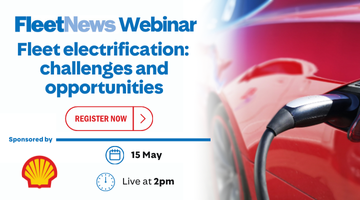The Mckinsey Quarterly Report, called A Road Map for Telematics, suggests that manufacturers should make and install in-car telematics systems to offer just safety, security and diagnostics features.
This limited ambition contrasts sharply with the growing size and scale of in-car telematics systems that provide genuine interactivity between manufacturer and driver.
The ability to maintain brand-building bridges with drivers on a day-to-day basis, rather than meet them once every three years when they change their cars, has become a powerful relationship marketing goal for the world's leading car makers.
Add in the opportunity for manufacturers to make regular aftersales revenue from cars they sell - a bit like the maker of mobile telephones also achieving revenue from line rentals and call charges - and the appeal of developing complex telematics services is clear.
In the United States, for example, telematics firm OnStar (part of the General Motors empire) now offers services in 36 of GM's 54 models as well as in some models from Honda and Lexus. OnStar has almost two million subscribers, paying between $16.95 and $34.95 a month depending on the range of services.
The basic package includes automatic notification of the emergency services in the case of airbag deployment, remote door unlock facility, remote diagnostics, and roadside assistance.
The higher level package delivers convenience services such as hotel and restaurant reservations, while a top-level package provided free of charge with new Cadillacs allows drivers to 'call on a concierge specialist who can provide services such as planning a birthday party or golf outing, finding a landscaping professional, or planning an exotic vacation getaway'. It also offers 'e-mail reminder messaging, so you never have to forget that anniversary again'.
Fleets and their high mileage, time-pressed drivers are one of the principal target markets for telematic providers in Europe, delivering everything from route guidance and congestion-avoidance advice to virtual PA services.
Fiat and Alfa Romeo have blazed a trail with their Connect system that links drivers directly to a call centre in Turin. For an annual subscription of about €100, a driver can push a button on the dashboard that sends a text message directly to the call centre. A call centre operator then telephones the driver using the in-car telephone system, and will provide services from summoning breakdown companies to identifying restaurants, locating the nearest filling station or making hotel reservations.
Mckinsey warns, however, that manufacturers should 'focus on building great cars while choosing their telematics investments carefully'.
'Instead of putting telematics hardware in all cars, these companies should offer it as an option and target customers who are relatively likely to subscribe to the services.
'Telematics technologies might indeed deliver an enticing variety of in-car services, which may still revolutionise the experience of driving,' the report says.
'But carmakers are not likely to capture a huge windfall from them. First, the total market won't be as predicted in some of the more optimistic forecasts. Second, the vehicle itself won't be critical to every application.'
According to Mckinsey, manufacturers should 'shift their strategies and focus on dominating a few core telematics applications - not all of them.' It said that for car makers 'the lure has been the promise of a steady revenue stream from the subscription fees that their own captive audience - drivers - would provide'.
'As players in an industry whose growth is estimated at 2% to 2.5% a year, it is hardly surprising that many carmakers want to grab a piece of the telematics pie.'
General Motors leads the pack, says the report, with its OnStar system, while other manufacturers 'in the race' include Ford, DaimlerChrysler and BMW, but Mckinsey warns that 'the attractive revenue pay-off these companies seek seems increasingly out of reach now'.
On the prospect of raising revenue from such systems, the report says: 'Car makers must form alliances with key players to ensure that the applications are enhanced by a car's design. Consumer electronics companies might, for example, offer systems that integrate telematics content (traffic reports, navigation directions) into the stereo systems of cars' built-in microphones tuned to the cars' acoustics.
'Car makers seem better positioned to support rather than own the operations of a solutions provider: a company that offers a range of services centred on gathering information and delivering it to vehicles,' it added.
Companies in the driving seat in terms of delivering this information and 'infotainment' are those with experience of integrating information from disparate sources, said Mckinsey. It suggests that such companies could include 'established portals such as Yahoo! to experienced call-centre operators such as AT&T'.
'When the buzz around telematics began,' the report says, 'cars seemed the best candidate to be a star in a mobile world where everyone was connected anywhere and at any time. In those days, mobile phones were expensive analogue-based power guzzlers. PDAs (handheld PCs) were weak and rare; cars, by contrast, had enough electrical output to handle more powerful phones and other devices.
'Since then, mobile phones and PDAs have pushed cars from the limelight, and their diminishing role in consumer electronics works against manufacturers trying to capture the value from telematics applications.' Product life cycle presents another barrier to car manufacturers, the report says, as consumer electronics companies 'often release several versions of a product a year' but car makers 'release new products every several years'.
Mckinsey said the risks of manufacturers investing heavily in telematics are high as revenues remain uncertain.
'Moreover,' it added, 'telematics must compete directly for capital with the core business of vehicle design, which is what the market expects car makers to do best.' It said vehicle design should take priority. 'Its return on investment will be higher and more secure than the potential return from providing a full suite of telematics services,' it said.
















Login to comment
Comments
No comments have been made yet.